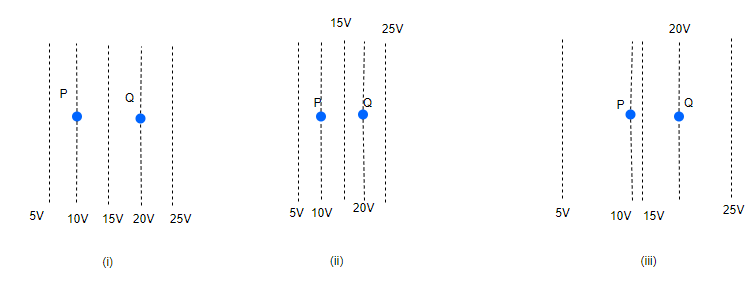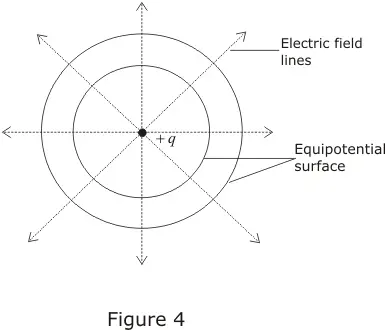Question 1
Equipotential surfaces
(a) are closer in regions of large electric fields compared to regions of lower electric fields.
(b) will be more crowded near sharp edges of a conductor.
(c) will be more crowded near regions of large charge densities.
(d) will always be equally spaced
Solution
(a), (b), (c)
Question 2
Which of the following is not the property of equipotential surfaces?
(a)They do not cross each other
(b)They are concentric spheres for uniform electric field
(c)Rate of change of potential with difference on them is zero
(d)They can be imaginary spheres
Solution
(a), (c), (d) are correct
Question 3
The below figure shows some equipotential lines distributed in space.

A charged object is moved from point P to point Q.
(a) The work done in Fig. (i) is the greatest.
(b) The work done in Fig. (ii) is least.
(c) The work done is the same in Fig. (i), Fig. (ii) and Fig. (iii).
(d) The work done in Fig. (iii) is greater than Fig. (ii)but equal to that in Fig. (i)
Solution
(c) as work done depends on ends points only



